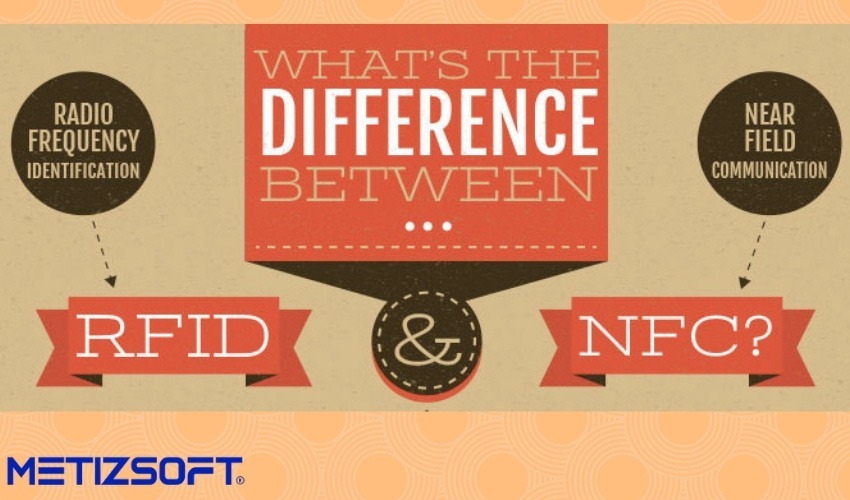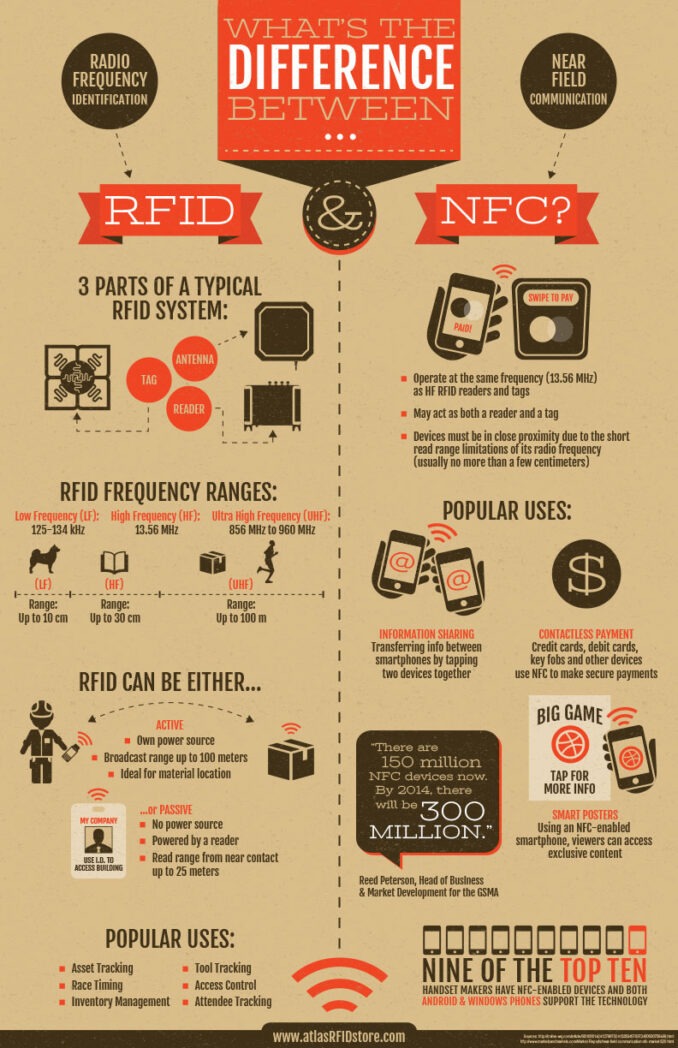
Have you ever paid for coffee by tapping your phone or scanning a card? These seemingly magical interactions are now possible by two similar yet distinct technologies: RFID and NFC. Both use radio waves for contactless communication, but which one is more useful in your daily life?
RFID uses radio waves to transfer identification information from an electronic object tag to an electronic reader. NFC is a more advanced version of RFID. You can implement RFID chips in dogs and scan them to find their whereabouts.
This comprehensive guide will explore their unique capabilities, from long-range tracking to secure data exchange, to help you understand which technology best suits your needs. So, get ready to navigate the fascinating world of wireless interaction!
Table of Contents
What is Radio Frequency Identification (RFID)?
RFID stands for Radio Frequency Identification. It is a wireless technology that uses high-frequency radio waves to transmit and store data. The data is stored on tags or cards, which do not require a power source.
The RFID system places a physical tag on an object, such as a truck, which sends data through radio waves to a remote reader. This data can include location details, delivery time, and other relevant information.
RFID tags come in two types: Active and Passive. Active RFID tags constitute their own power source and can broadcast with a read range of up to 100 meters. This long read range makes active RFID tags ideal for industries where asset location and logistics improvements are essential.
How does RFID work?
RFID offers advantages over barcodes. It can read tags without needing a direct line of sight, and tags can store more data. RFID is useful for supply chain management, access control, and contactless payments.
- The Tag: Products or objects are tagged with tiny RFID tags. These tags have two parts: a microchip storing data and an antenna.
- The Reader: An RFID reader emits radio waves through an antenna.
- Interaction: The radio waves from the reader reach the RFID tag, activating it and allowing it to transmit the data stored in its microchip back to the reader.
- Data Transfer: The reader receives and transfers the data to a computer system for further processing.
What is Near Field Communication (NFC)?
Near-field communication (NFC) is a wireless technology becoming increasingly popular in the fleet industry. NFC allows for short-range communication between compatible devices, typically an NFC tag and a smartphone or tablet.
NFC tags are small chips that store data. You find them in stickers, magnets, or labels. Most smartphones and tablets can read the data in NFC tags at a range of up to four inches.
It is important to note that NFC requires action by the user. It has a concise range of action, as the general working range is within 0.1 meters. NFC has a user-interactive technology that requires the user’s active participation to complete functions such as payment or access.
RFID vs NFC: Understanding the Differences!

You can use RFID for identification in areas like asset tracking, inventory management, and attendee tracking. On the other hand, you can use NFC for seamless communication in data and information chains and in-store check-ins. Let’s explore their differences:
Range of Operating Distance
RFID technology can function over long distances, while NFC covers short distances only. Electronic tags that use radio-frequency identification (RFID) technology can be detected from a distance of up to 100 meters.
These tags do not require a direct line of sight to be read. In contrast, near-field communication (NFC) tags must be visible to the reader to be detected.
Communication
RFID and NFC are two different communication systems. RFID supports only one-way communication, meaning that the RFID tag can only send electronic information to the reader.
On the other hand, NFC supports one-way and two-way communication, allowing it to act as a reader and a tag. This two-way communication system is advantageous for complex card emulation and peer-to-peer interactions.
Data Storage
NFC technology provides more advanced data storage capabilities than identification. NFC tags can hold up to 4KB of data, including various formats such as text, URLs, and media.
While RFID tags require costly readers to access data, most modern smartphones have built-in NFC reading capabilities, making it easier and more affordable to use NFC tags.
With NFC, users can read and write data onto a tag or card, access detailed metadata, launch apps or URLs with a simple scan, and even share data between phones using NFC peer-to-peer communication.
Frequency Devices
Radio-frequency identification (RFID) technology operates on different frequency ranges, such as low frequency (125-134 kHz), high frequency (up to 13 MHz), and ultra-high frequency (up to 960 MHz).
The range of RFID technology varies from 10 centimeters to 100 meters. On the other hand, near-field communication (NFC) technology operates only within the high-frequency range.
Bottom Line
RFID and NFC are wireless communication technologies that allow contactless data transmission. However, they have different strengths and are best for specific applications. RFID is ideal for long-range tracking and managing extensive inventories.
At the same time, NFC is ideal for secure two-way communication, user interaction, and tasks such as mobile payments and data sharing. Understanding the critical differences in range, communication type, data storage, and applications is essential before concluding which technology best suits your needs.
Whether you’re looking to streamline supply chains or create seamless mobile experiences, RFID and NFC offer exciting possibilities for wireless interaction in the future.
AboutChetan Sheladiya
Related Posts
How to Make Your Current WordPress Website ADA Compliant?
In our previous written article on eCommerce ADA Compliance Website, we held the view that the issue of web accessibility is...
How To Develop Web Applications Using Silverlight?
Microsoft’s Silverlight technology is a multi-browser, multi-platform implementation of the .NET Framework for building...

